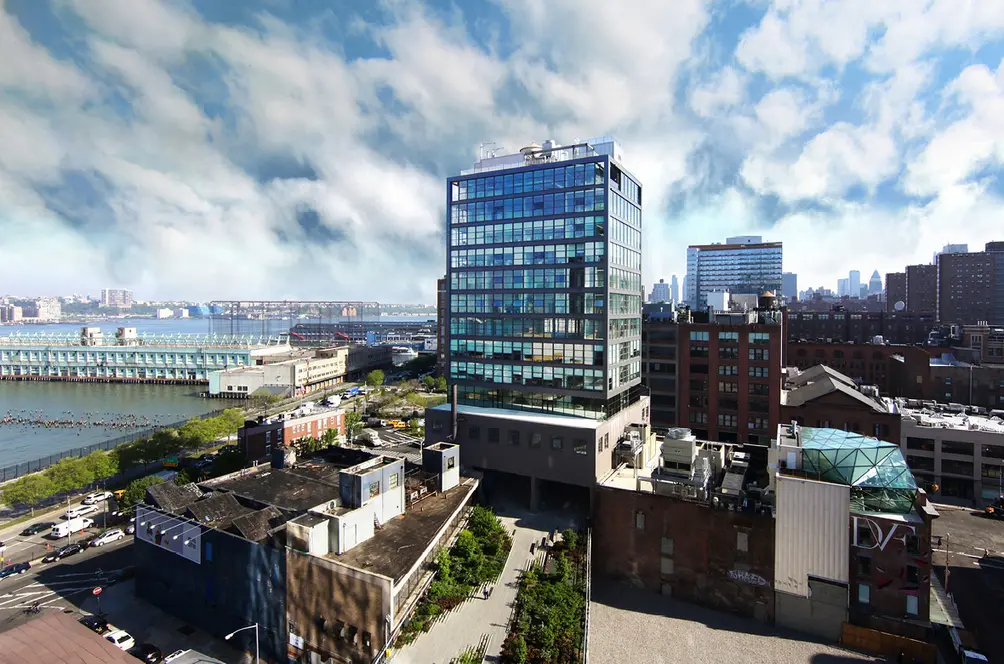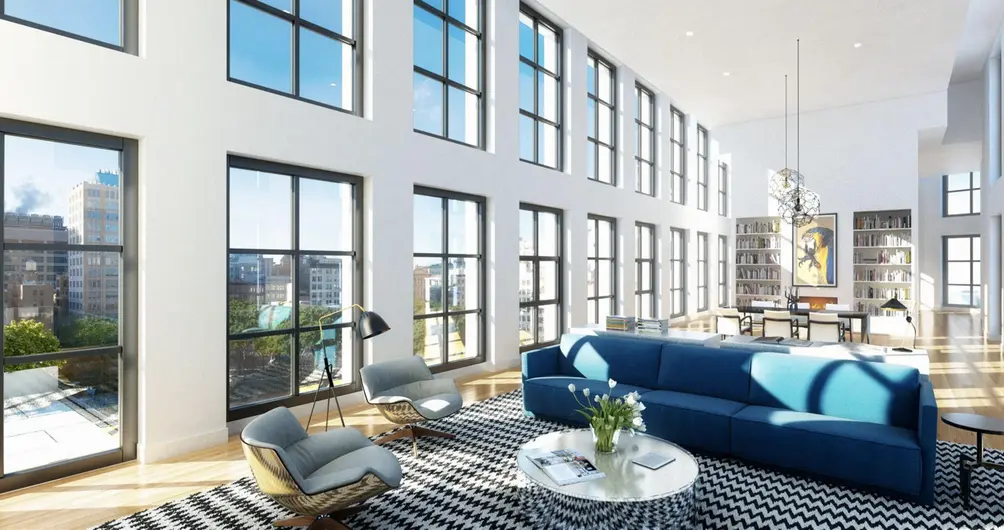 Morris Adjmi
Morris Adjmi
In his own unique way, Morris Adjmi is leading an architectural revolution. While many of his contemporaries scramble to build taller, glassier and ever-more futuristic buildings, Adjmi represents a return to the fundamentals: designing subtly distinct, timeless buildings that blend seamlessly into historic neighborhoods of Tribeca, Chelsea and Nolita.
Since launching his own firm, MA, in 1997, Adjmi has quickly become the architect of choice for downtown developers. His utilitarian and industrial-influenced designs are a hit with buyers and critics alike, providing particular resonance in post-recessionary New York, where overt displays of wealth are considered ostentatious in certain circles.
A native of New Orleans, Adjmi started his career working alongside Pritzker Prize-winning Italian architect Aldo Rossi. During their 10-year collaboration, Adjmi developed his niche for designing contextual, historically rich buildings. For their first New York project, Rossi and Adjmi built the Scholastic Building in SoHo -- the first new building in the SoHo Cast-Iron Historic District. Completed in 2001, the Scholastic Building -- which was praised by architecture critic Paul Goldberger as a building that will teach generations of architects the proper way to respond to historic contexts -- provided the young architect with a strong reference point for which he would later base his solo works.
As follow ups, Adjmi designed several noteworthy commercial buildings, including the Theory Building, the first Landmarks-approved new construction in the Meatpacking District, and the High Line Building, an 11-story LEED-certified office building in Chelsea that sits above an existing three-story industrial building and also straddles the High Line.
 Map
Map
 The High Line Building
The High Line Building
Naturally, given the strong demand for residential conversions, Adjmi soon pivoted to the lucrative residential market, where his classic designs modeled after 19th-century industrial buildings became instant sellers.
At 408 Greenwich Street, a nine-story, mixed-use building with ground-floor retail, commercial space and four expansive apartments, Adjmi recreated the look and feel of a classic Tribeca loft building. When sales at the building commenced in 2008, the four apartments -- which range in size from 3,644 to 3,871 square feet -- sold within a matter of months, yielding prices of $2,177 a square foot, far above Tribeca's then-neighborhood average of $1,335 a square foot. In 2015, one unit in the building resold for $2,485 a square foot, still well above the neighborhood average in 2015, $1,970 a square foot.
That same year, Adjmi designed The Emory, a 15-story sliver building located in the Ladies Mile Historic District in Chelsea. In keeping with the historic district, the building features traditional flourishes such as zinc-colored metal columns, spandrels and window frames, and a gray glazed brick face. With the majority of sales completed in 2009, the Emory had price-per-square-foot averages that were in line with the neighborhood average -- $1,287 as opposed to the then-Flatiron average of $1,285.
Some of the architect's most ambitious projects opened in 2015 and are imbued with Adjmi's trademark elements: traditional orientation and materials coupled with large residential interiors.
Sterling Mason, at 71 Laight Street in Tribeca, comprises two buildings: a restored and converted former coffee-and- tea warehouse, built in 1905 and constructed of brick and terra cotta; and its modern twin, constructed of aluminum panel skin with a plasma finish. Adjmi designed the new addition to appear as the historic structure's photographic negative, likening the juxtaposition to a digital and analogue watch placed side-by-side. Both buildings have a total of 32 condominiums and an interior landscaped courtyard area. In 2015, the majority of units in the project closed for an average price of $2,510 a square foot, well above the neighborhood average of $1,970 a square foot.
 11 North Moore, interior
11 North Moore, interior
Also in Tribeca, 11 North Moore Street is a nine-floor, 18-unit condominium building constructed of limestone and black granite. With luxurious amenities such as private swimming pools for the two duplex penthouses, 11 North Moore was likened to another neighborhood game-changer -- 15 Central Park West. The average price of sales for the first couple of units in the building in 2015, $2,673 a square foot, was also above the neighborhood average of $1,970.
One of the most prolific downtown architects, Adjmi is busy with several other proposed properties, including 7 West 21st Street, a two-building development in the Ladies Historic Mile District, and 55 West 17th Street, a 19-floor, 53-unit development from Toll Brothers where listings were averaging $2,259 a square foot as of early 2016.
In addition to tony neighborhoods in Downtown Manhattan, Adjmi is building a visible presence in Brooklyn, with projects such as the restored and converted Wythe Hotel in Williamsburg, and the Townhouses of Cobble Hill, a collection of nine townhouses -- five of which are newly constructed.
Adjmi has himself put down roots in Brooklyn, establishing a Williamsburg office with fellow architect and frequent collaborator Aldo Andreoli. The pair first teamed up in 2010 on a design competition for a 120,000-square-foot fashion photography and video studio at 50 Varick Street. After winning the commission, Adjmi and Andreoli formalized their partnership, subsequently designing 250 Bowery, 11 North Moore, 290 West Street, as well as other notable properties.


 6sqft delivers the latest on real estate, architecture, and design, straight from New York City.
6sqft delivers the latest on real estate, architecture, and design, straight from New York City.
